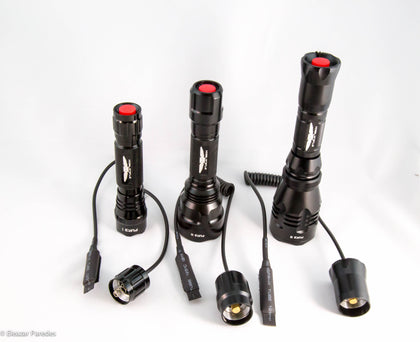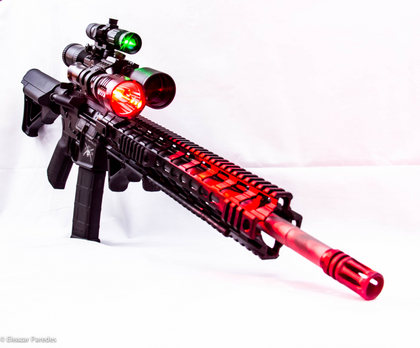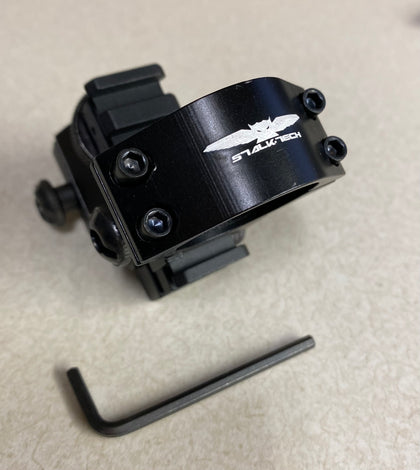Hunting Lights is all we do!
Not sure which hunting light is right for you?, you have come to the right place.
just as you may use different calibers and optics for a particular hunt, choosing the right light for you is crucial to the level of success you will experience on your hunt.

Red or Green light?
You can read all you want about this animal not seeing red light and this animal not seeing green light, the truth is they all see light! (I will explain later). Whether green or red is not as relevant as the intensity and true color of the light, while it is true that a hog, because of its visual spectrum, will not see the color green and that the same holds true for coyotes not being able to recognize the color red, it is important to understand that they still see a light.
Granted it may be a very dark shade of brown or grey but nonetheless a shade of light.
That being said, the key to identifying which of the lights is the best for hunting at night is to understand that principle and apply it to your situation.
Think of it this way, while an animal would not expect to see a colored light being waved at him, it is reasonable to expect that an animal will be exposed to more natural light sources throughout the night (think moon light, vehicles in the distance) in a manner that could be perceived as natural to a hog, coyote, racoon or whatever it is you are hunting for.
As an example, coyotes will see more white light out of the color green and regardless of the color, will see a light, it goes without say that being lit up with a green light would feel more unnatural and they would likely spook.
On the other end, since a coyote’s visual spectrum does not allow them to see the color red, it would be wiser to use a red light, they would still see a source of light, but so faint that it would not feel more unnatural than the moon shining down on them as a cloud opens up or the slight change in light intensity from a vehicle’s headlights sweeping through a field from a distance as a car may turn somewhere down the road.
Now think of this last example (the moon). On a full moon night, as the clouds come and go, the moon light slowly brightens down to the earth down below, this is a very smooth and gradual change in light intensity with no sharp contrasts or clearly defined lines of light.
It is not like a light switch that suddenly turns the light on or off!
Which brings us to the next point: Slow and easy is the key!
I could argue (and it has been proven) that you could actually hunt with a white light.
99% of people will tell you that it is not true and that it will spook the hogs, coyotes or whatever and they would be right. However, if the light was set at the correct intensity (just enough light to see your target and no more!), if the light was first pointed up and lowered ever s slowly, one would still stand a chance not to spook the animals.
Using this same theory and putting it into practice with a light that emits just the right color of light (correct Nano-meter rating on the chromatic scale for each color), tremendously increases one’s chances for a successful hunt.
With the myriad of green hunting lights and red hunting lights available on the market, there is no point in not putting all the chances on your side but it proves the point that regardless of the color of light, if too bright, erratic, of the wrong color scale and overall not introduced properly, any light will spook hogs, coyotes, bobcats or whatever you may be hunting for.




